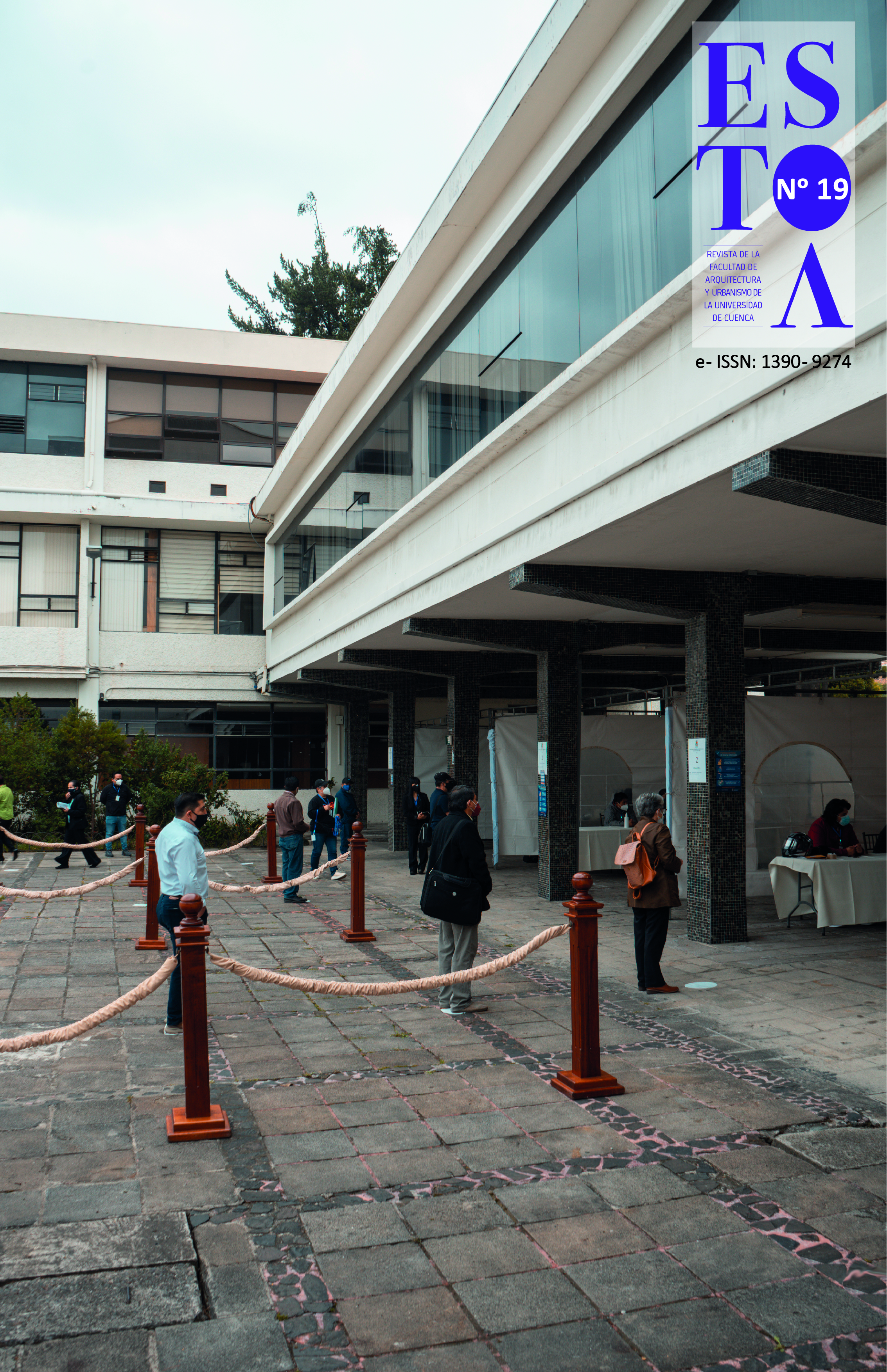Changes in the fundamental periods of buildings constructed with the great soviet panel
DOI:
https://doi.org/10.18537/est.v010.n019.a12Keywords:
Fundamental periods of oscillation, environmental vibrations,, seismic behavior, stiffness modifiers, calibrationAbstract
After a visual inspection of 200 buildings built with the prefabricated great soviet panel system in Santiago the Cuba, factors leading to potential seismic damage were detected. These factors include pathological damage to structural elements and joints, with severe levels of damage. Likewise, changes in weight and / or rigidity, due to the violations of the residents. In order to forecast the seismic behavior of these buildings, the fundamental period is determined in 7 of them through environmental vibrations. Then, with these results, using linear analysis methods, the models of the buildings are calibrated. In the calibration, flexural stiffness modifiers are iteratively incorporated into the structural models. In addition, the properties of the materials are taken into account based on the results of destructive and non-destructive tests on concrete and steel. Both by instrumental and analytical means, similar values of the fundamental periods of oscillation are reached when faced with the earthquake of calculation. Changes in the seismic behavior of these buildings are envisaged as a result of increases in the fundamental periods of oscillation and the coupling of the oscillations.
Downloads
References
American Concrete Institute. (2019, june). Building code requirements for structural concrete (ACI:318-19). ACI Committee 318. DOI: 10.14359/5171693
Applied Technology Council and Federal Emergency Management Agency. (1997, october). NEHRP guidelines for the seismic rehabilitation of buildings (FEMA- 273). Building Seismic Safety Council.
Chopra, A. (2014). Dinámica de Estructuras. Pearson Educación.
Díaz-Segura, E. G. (2017). Incertidumbres en la estimación del periodo fundamental de terrenos inclinados. Obras y proyectos, (21), 38-44. https://dx.doi.org/10.4067/S0718-28132017000100005
Esquivel-Salas, L. C. y Schmidt- Díaz, V. (2016). Mediciones de vibraciones ambientales en tres edificios de concreto reforzado de 28, 11 y 6 pisos. Ingeniería Sísmica, (95), 81-103. http://www.scielo.org.mx/scielo.php?script=sci_arttext&pid=S0185-092X2016000200081&lng=es&tlng=es.
Lewicki, B. (1968). Edificios de viviendas prefabricadas con elementos de grandes paneles. Arkady.
Mohamed-Naguib, A. E. y Magdy-Israel, S. (2017). Estimation of period of vibration for concrete shear wall buildings. HBRC Journal, 13 (3), 286-290. https://doi.org/10.1016/j.hbrcj.2015.08.001
Oficina Nacional de Normalización de Cuba. (2017). Construcciones sismorresistentes. Requisitos básicos para el diseño y construcción (NC-46-2017).
Housing and Building Research Center. (2012). Egyptian Code for Computations of Loads and Forces in Structural and Building Work. (EGC -2012).
Oliva, R. (2001). Determinación experimental del periodo fundamental de vibración de estructuras para la evaluación de la vulnerabilidad en Cuba. Grupo de Ingeniería Sísmica. Centro Nacional de Investigaciones Sismológicas en Cuba.
Oliva, R. (2018). Metodología para la determinación experimental del período de las construcciones. [tesis de maestría no publicada, Universidad de Oriente-Cuba].
Peña, F. (2010). Estrategias para el modelado y el análisis sísmico de estructuras históricas. Ingeniería Sísmica, (83), 43-63. http://www.scielo.org.mx/pdf/ris/n83/n83a3.pdf
Peralta-Gálvez, H., Sánchez-Tízapa, S. y Arroyo-Matus, R. (2014). Incertidumbre en la evaluación de periodos en edificios de mampostería tipo INFONAVIT ubicados en Chilpancingo, Guerrero. Investigación y Ciencia, (63), 32-39. https://investigacion.uaa.mx/RevistaIyC/archivo/revista63/Articulo%205.pdf
Polyakov, S. (1974). Design of earthquake resistant structures. MIR Publishers.
Socarrás, Y. C. y Álvarez, E. (2019, 23 de noviembre). Factores causantes de daños potenciales en el Gran Panel Soviético. Actas de la VI Jornada Internacional de Ingeniería Civil. UNAICC.
Socarrás-Cordoví, Y.C., González-Díaz, L., Álvarez- Deulofeu, E., González- Fernández, M. y Roca- Fernández, E. (2020a). Evaluación de la calidad del hormigón en edificaciones construidas con el sistema prefabricado gran panel soviético. Tecnología Química, 40(2), 264-277. https://tecnologiaquimica.uo.edu.cu/index.php/tq/article/view/5149
Socarrás-Cordoví, Y.C., González-Díaz, L., Álvarez-Deulofeu, E., González-Fernández, M., Roca-Fernández, E. y Torres-Shoembert, R. (2020b). Valuation of the Durability of the Concrete Used in the Precast Great Soviet Panel System, Facultad de Ingeniería, 29(54), e10486. https://doi.org/10.19053/01211129.v29.n54.2020.10486
Wathelet, M. (2011). Geopsy: Geophysical Signal Database for Noise Array Processing, Programa computacional. (versión 2.9.0) [software]. http://www.geopsy.org
Published
Versions
- 2021-06-09 (3)
- 2021-04-05 (2)
How to Cite
Issue
Section
License
Copyright (c) 2021 Estoa. Revista de la Facultad de Arquitectura y Urbanismo

This work is licensed under a Creative Commons Attribution-NonCommercial-ShareAlike 4.0 International License.
The Journal declines any responsibility for possible conflicts derived from the authorship of the works that are published in it.
The University of Cuenca in Ecuador conserves the patrimonial rights (copyright) of the published works and will favor the reuse of the same ones, these can be: copy, use, diffuse, transmit and expose publicly.
Unless otherwise indicated, all contents of the electronic edition are distributed under a Creative Commons Attribution-NonCommercial-ShareAlike 4.0 International License.




